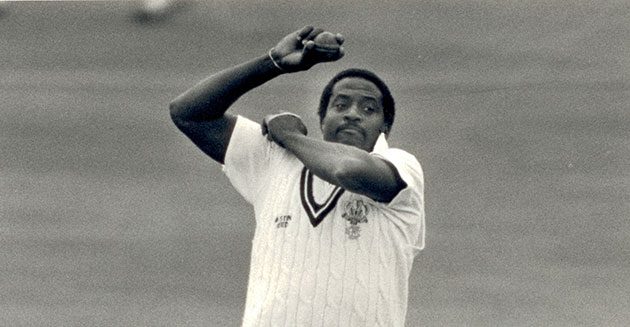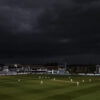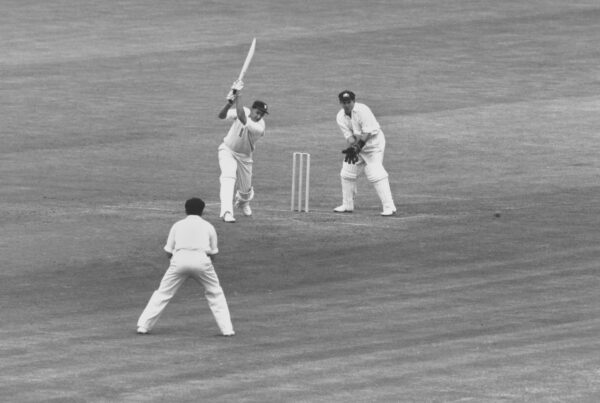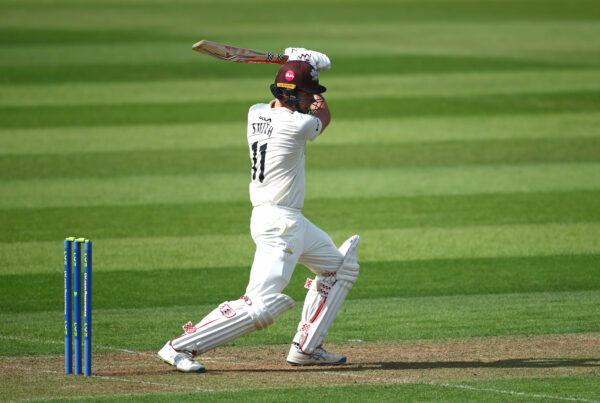Find out more about some of the incredible players from Black backgrounds who have represented Surrey. Click on the names below to read more.
Joey Benjamin
Making his debut at the relatively late age of 27 made Joey Benjamin’s achievement in reaching international cricket all the more laudable.
After four seasons with Warwickshire – he was born in St Kitts and played Minor Counties cricket for Staffordshire – Benjamin moved south to Surrey in 1992, where he became an integral member of the side over the next seven years. Consistent success at county level saw him picked for the final Test of the 1994 summer, making his debut at The Oval against South Africa.
The tourists were 1-0 up and needing just a draw to claim their first series against England since 1965, Benjamin – whose spring-heeled approach was followed by a whirl of runs which delivered the ball at nippy fast-medium – claiming 4-42 in the first innings. Yet his contribution, and that of others, was overshadowed by Devon Malcolm’s extraordinary blast of 9-57 which decimated South Africa’s second innings and inspired England to victory.
It was sufficient to earn Benjamin a tour place to Australia the following winter, although he was limited to two one-day internationals of a frustrating winter, playing out the rest of his career with Surrey before departing in 1999.
It was while working at Reigate Grammar School that Benjamin suffered a fatal heart attack, aged 60, in March 2021.
Gary Butcher
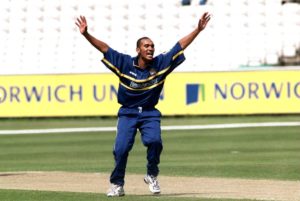 No account of Gary Butcher’s cricket career is complete without reference to the events of August 16 2000.
No account of Gary Butcher’s cricket career is complete without reference to the events of August 16 2000.
Three years younger than brother Mark, Gary had spent the first five seasons of his career with Glamorgan, appearing for England U19s in 1993-94.
A move to his native Surrey in 1999, as the squad which would win three County Championships in four seasons was coming to fruition, seemed the natural course and the following season he broke into the four-day team as Adam Hollioake’s men retained the title.
Butcher’s ability to swing the ball met rich reward when Derbyshire visited The Oval, his first Championship appearance of the season. The visitors were already in trouble at 106-6 and 10 runs later he struck with the final ball of his seventh over by having Paul Aldred caught in the slips by Butcher snr. The first two of his eighth saw Tim Munton and Kevin Dean edge to Martin Bicknell in the slips to complete a hat-trick and he became the first Surrey bowler since Pat Pocock in 1972 to take four in four by having Liam Wharton LBW.
It pushed Surrey quickly to victory by an innings and 45 runs by tea on the second day and although Butcher faded away from the first-class scene, he remains involved through coaching – most notably at King’s College School in Wimbledon and at Reigate Priory CC.
Mark Butcher
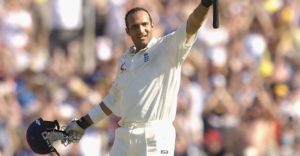 The young boy who played on the outfield at The Oval became one of Surrey and England’s finest top-order batsmen at the turn of the 21st century. While dad Alan was playing for the county – he later became the head coach – Mark and younger brother Gary would be dashing around and dreaming of being the men in the middle.
The young boy who played on the outfield at The Oval became one of Surrey and England’s finest top-order batsmen at the turn of the 21st century. While dad Alan was playing for the county – he later became the head coach – Mark and younger brother Gary would be dashing around and dreaming of being the men in the middle.
Mark’s Test career occupied 71 matches, his eight centuries highlighted by a sublime 173no in which he despatched a mighty Australian attack around Headingley in 2001 to claim an unlikely win for England to prevent an Ashes whitewash. More success might have come but for a wrist injury which cut short his international career in 2004-05 and a chronic knee complaint terminating his first-class career in 2009 at 37, with 17,780 runs in the bank, when he seemed to have many big scores still in front of him.
Happily Butcher was not finished with cricket and, although music is a major part of his life, he has established a reputation as an outstanding independently-minded commentator on both television and radio, broadcasting from every part of the globe.
Sylvester Clarke
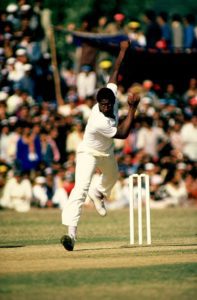 Batsmen feared coming to The Oval for a decade from Sylvester Clarke’s arrival at Surrey in 1979.
Batsmen feared coming to The Oval for a decade from Sylvester Clarke’s arrival at Surrey in 1979.
He was as brutal with a ball in hand as he was amiable when he came off the field.
Limited to 11 Tests for West Indies by having to compete with a succession of greats and then joining the rebel tour to South Africa, Clarke instead devoted to making life misery for domestic batsmen with a combination of fierce pace and alarming lift. Many of the 591 first-class wickets he took for Surrey – out of 942 overall – were matched by bruised and broken bones and he probably did as much to promote the wearing of helmets as anyone in the game. Sadly he had little time to look back on his career, dying when he was just 44 in December 1999.
“Batsmen genuinely feared him,” remembers friend and team-mate Monte Lynch. “Even Viv Richards took no liberties.”
Alex Tudor remembers seeing Clarke in action well after his retirement from a chronic knee injury: “He was in an over-35 game in Barbados and bowling in plimsolls but Graham Gooch had all the gear on and he was still playing county cricket. It gave you an idea of what he must have been like in his pomp.”
Michael Carberry
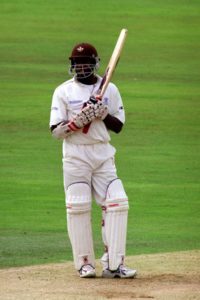 Single-minded determination was the hallmark of Michael Carberry’s career. The left-hander, born in Croydon, had to fight his way through to Test level – he played six matches, plus half a dozen one-day internationals and a T20 – despite numerous hurdles, which included serious injuries and ill-health.
Single-minded determination was the hallmark of Michael Carberry’s career. The left-hander, born in Croydon, had to fight his way through to Test level – he played six matches, plus half a dozen one-day internationals and a T20 – despite numerous hurdles, which included serious injuries and ill-health.
Opener Carberry’s promising early days with Surrey included his maiden first-class century but he was competing with international players in a team which won three County Championships in four years, where even his magnificent fielding could not make the difference.
There was further frustration in three years at Kent but he made the most of a move to Hampshire, his Test debut coming against Bangladesh in March 2010, having gained recognition all the way up from U15 level. The other five matches came on England’s hellish Ashes tour of 2013-14, when he stood up better than most to Mitchell Johnson and his fellow pacemen.
Yet to Carberry’s intense disappointment, there were to be no more opportunities at international level and after a short spell at Leicestershire he quit the game, nowadays showing his talents as an accomplished artist.
“Carbs scored bundles of runs but he had players like Mark Butcher, Ian Ward and Mark Ramprakash to compete against at Surrey,” said colleague Alex Tudor. “Kent seemed more interested in going down the Kolpak route but he took his chance at Hampshire to build a very distinguished career.”
Sophia Dunkley
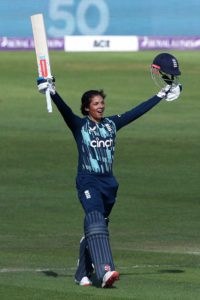 Born in Lambeth, not far from The Oval, Sophia Dunkley having spent much of her childhood in north London, the batter/leg-spinner began her career with Middlesex before moving back south of the river in 2020, having already featured for Surrey Stars. She had made her international T20 debut two years earlier and Dunkley’s career has maintained a steady upwards trajectory – becoming one of England’s first 24 professional women’s cricketers, a founder member of the South East Stars side – despite the complications of playing in bubbles through the pandemic.
Born in Lambeth, not far from The Oval, Sophia Dunkley having spent much of her childhood in north London, the batter/leg-spinner began her career with Middlesex before moving back south of the river in 2020, having already featured for Surrey Stars. She had made her international T20 debut two years earlier and Dunkley’s career has maintained a steady upwards trajectory – becoming one of England’s first 24 professional women’s cricketers, a founder member of the South East Stars side – despite the complications of playing in bubbles through the pandemic.
Dunkley made 74no on her Test debut against India last year, the first of three long format games so far. She scored a first international century against South Africa at Bristol, making 107 as England won by 114 runs. And having previously appeared in the middle-order, she relished her first opportunity to open for England in making an aggressive T20 half-century against South Africa at Chelmsford in July, finishing with 59no from 39 balls as she saw the hosts to victory by six wickets at Bristol. She went on to make an unbeaten 61 against India at Chester-le-Street.
Tony Gray
A towering presence at 6ft 6in, armed with the pace and bounce required for sustained success, Tony Gray was set to join the list of great fast bowlers from the West Indies.
Recruited by Surrey with a month gone of the season in 1985 to answer an injury crisis, the Trinidadian – then 22 – claimed 79 wickets from 19 County Championship outings. For the next two seasons he dovetailed with Sylvester Clarke as the overseas spearhead at The Oval, making his debut for West Indies in both Tests and ODIs.
A broken wrist suffered batting in the nets, while preparing for the 1987 World Cup, proved a turning point for Gray, whose career was further interrupted by a series of injuries. Gray left Surrey after a troubled 1988 campaign and although a brief return came two years later, he found the competition from Pakistan speedster Waqar Younis too stiff.
A haul of 22 wickets in just five Tests, costing 17 apiece, and 451 first-class victims at 22 suggest he could have achieved so much more.
Chris Jordan
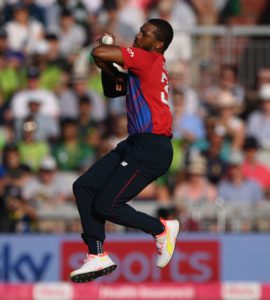 Returning to the Kia Oval this year to take over as T20 captain saw Chris Jordan come full circle.
Returning to the Kia Oval this year to take over as T20 captain saw Chris Jordan come full circle.
He had burst on to the first-class scene with Surrey in 2007 as an 18-year-old who was studying at Dulwich College, having been spotted playing in Barbados.
Injuries and weight of expectation conspired to slow Jordan’s development and it needed a move to Sussex in 2013 to reignite a career which has brought him eight Tests, 34 one-day internationals and 82 T20 games for England. He is acknowledged as a key member of the latter team and is a member of the 2022 World Cup squad in Australia.
Jordan’s worth is shown particularly in the final stages of T20 matches, bowling at “the death”, and has made him a highly-prized asset for tournaments around the world with regular appearances in the IPL and Big Bash League. A haul of 18 victims saw Jordan as the joint highest wicket-taker for Surrey in this year’s Blast, his team reaching the quarter-finals.
Mark Kenlock
Mark Kenlock was 29 when he made his first-class debut for Surrey, an occasion memorable for little else. At the end of a disappointing season for his county, who had started 1994 on a wave of optimism with three heavy victories in the County Championship, they had tailed off badly and suffered a trio of innings defeats in August.
Kenlock, arriving on the staff that year after making several appearances for the second team over the previous two years, finally got his opportunity in the final match of the season, against Kent at The Oval in a rain-affected draw. But the left-arm seamer, one of the most respected bowlers in Surrey club cricket for several years, displayed the stamina for which was well known in claiming 3-104 from 28 overs as Kent made 445 all out.
His seven Championship appearances over three seasons yielded 11 wickets and he continued to play List A cricket for the Surrey Cricket Board side until 2000, as well as remaining one of the most respected bowlers in the Surrey Championship.
Chris Lewis
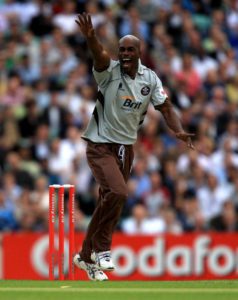 Few cricketers have experienced the highs and lows of Chris Lewis, both on and off the field.
Few cricketers have experienced the highs and lows of Chris Lewis, both on and off the field.
Capable of bowling with pace and movement, a stylish batsman and sublime fielder, he was unfortunate to be one of many hailed as the “new Botham” in the 1990s, when a struggling England team often sought salvation.
Making his Test debut just three years after arriving on the first-class scene – Lewis was born and spent his childhood in Guyana – underlined the excitement he engendered, so his 32 Tests and 53 ODIs over eight years spoke of underachievement, the highlight when he helped England to the 1992 World Cup final.
For Surrey, his arrival in 1996 – following spells at Leicestershire and Nottinghamshire – came when the county had not won a trophy for 14 years. Lewis was a key figure in ending that drought as the Sunday League trophy that season was followed by the Benson & Hedges Cup in 1997. Then he was back on the road, returning to Leicestershire and helping them to the County Championship in 1998 but his international days ended and his career declined, a brief spell back at The Oval coming in 2008 as a white ball specialist.
Rarely a stranger to controversy, Lewis’s life plunged into a new crises when he was sentenced to 13 years in jail for drug smuggling in 2009, serving half his sentence. He resolved, on his release, to using his experiences to help cricketers avoid the pitfalls which have afflicted his life.
Monte Lynch
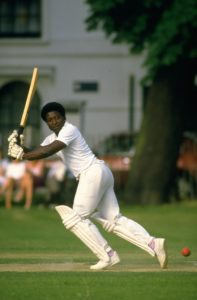 There were few more exciting batsmen to watch in English cricket in the 1980s than Monte Lynch.
There were few more exciting batsmen to watch in English cricket in the 1980s than Monte Lynch.
An early childhood spent on the east coast of Guyana was followed by moving to live in Surrey, making his first-class debut aged 19 at a time when he remembers the county squad being fitted out in gaudy brown tracksuits. When Lynch was in his prime, despatching some of the fastest bowlers in the world with elan, it never paid to be late back from lunch.
His best form in the mid-1980s coincided with a lengthy ban for having joined the West Indies rebel tour of South Africa in 1983-84 and ended his brief career with Guyana too. When he was available again, England picked him for three one-day internationals against West Indies in 1988, which proved unsuccessful, and he might well have been given further opportunities but for a broken and dislocated ankle a year later which would limit his movement on a long-term basis. Leaving Surrey after the 1993 season, Lynch extended his county career – which brought 18,235 first-class runs and 367 catches mostly pouched in the slips – through two more years at Gloucestershire.
His coaching career has taken him to Royal Grammar School in Guildford, a variety of posts around the world and, more recently, the London Schools Cricket Association. He remains a regular visitor to The Kia Oval.
Dennis Marriott
Born in Jamaica, Dennis Marriott came to Surrey’s attention while playing for Carnegie – a club formed for players from the Caribbean who did not feel welcome elsewhere – and impressed as an amateur in the 1963 and 1964 seasons.
Left-arm seamer Marriott joined the professional staff in 1965 and over the next three seasons claimed 43 first team wickets, including match figures of 5-67 against India. Competing against the likes of Geoff Arnold, Robin Jackman and David Gibson meant opportunities were limited, although he claimed 140 wickets for the second team over four years, and Marriott – who had arrived in the UK aged 19 – left the club.
But switching to bowling cutters, he attracted the interest of Middlesex for a spell between 1972 and 1974, taking 23 John Player League wickets in 1973 in what skipper Mike Brearley described as “Underwood mould”. Marriott continued to be a force in club cricket, his partnership with Eaton Swaby instrumental in Mitcham claiming four Surrey Championship titles in the 1970s.
He retired in 1988, aged 48, and although ill-health forced him into a wheelchair later in life, he was a regular attender at The Oval until shortly before his death aged 75 in 2014.
Ebony Rainford-Brent MBE
There seems nothing that Ebony Rainford-Brent cannot take in her stride.
Being brought up in Herne Hill with three brothers was ideal preparation for the challenges facing a talented sporting all-rounder, which included having to conquer back problems so serious that it delayed her university studies and saw her advised to give up the game by doctors.
She ignored the medics and her reward for that singlemindedness was a career which took her all the way from Surrey’s academy – and later captaining the county side – to making 22 ODI and seven T20 appearances for England, a member of the national side which won the 2009 World Cup in Sydney and the first black woman to play for her country.
Rainford-Brent’s influence has grown even greater since she retired from the game, her important work for the Chance to Shine and Lord’s Taverners charities followed by becoming director of women’s cricket in Surrey. She spearheaded the African Engagement Programme (ACE) designed to encourage black youngsters to take up the game.
All of which is topped by being a regular presence on television and radio in a burgeoning media career. She was appointed MBE in the 2021 Queen’s Birthday Honours for services to cricket and charity.
Mark Ramprakash MBE
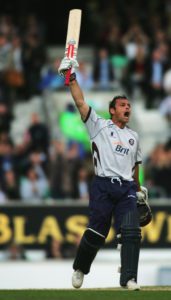 One of the great modern run machines in English cricket, Mark Ramprakash’s father was Indo-Guyanese and his mother English, his youthful promise confirmed by making his first-class debut for Middlesex aged 17, going on to captain the county between 1997-99.
One of the great modern run machines in English cricket, Mark Ramprakash’s father was Indo-Guyanese and his mother English, his youthful promise confirmed by making his first-class debut for Middlesex aged 17, going on to captain the county between 1997-99.
By the time he moved to Surrey in 2001, aged 31, he had played the majority of his 52 Tests and remained an enigma at that level. But his adopted county were fortunate to enjoy the mature best of Ramprakash’s talent, not least two astonishing seasons in 2006 and 2007 when he scored more than 2000 first-class runs in each.
Having scored his maiden first-class century against Yorkshire at Headingley in 1989, he returned there in 2008 to score his 100th and fixture list has changed so much now that he will almost certainly be the last cricketer to achieve that feat. Ramprakash finished with 114 tons among his 35,659 first-class runs, the style in which they were made as notable as the quantity.
A career in coaching has included spells with the England team and back at Middlesex, while his broadcasting and newspaper work mark him out among the most astute and measured critics.
Nico Reifer
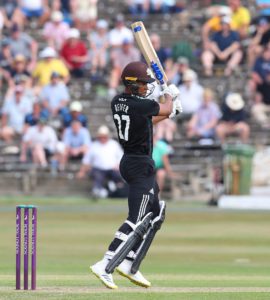 Building a first-class career in the aftermath of the pandemic has not been easy for Nico Reifer.
Building a first-class career in the aftermath of the pandemic has not been easy for Nico Reifer.
His rookie contract for 2020 came in a season when the entire fixture list was scrapped, the limited programme which replaced it giving him no opportunities. Born in Barbados and a regular in Surrey age group teams from the age of 15 – he spent four years at Whitgift School in Croydon – Reifer had been playing for the county second team since 2017.
His breakthrough at first team level came in 2021 when a stylish innings of 26 helped Mark Stoneman to win a tight match against Yorkshire at Scarborough in the Royal London Cup. Consistency remains elusive but Reifer’s first-class debut in May highlighted his potential when he hit 68 against the Sri Development XI at Guildford. And he built on that by making a vital half-century against Warwickshire in a thrilling Royal London Cup tie at the Kia Oval.
Lonsdale Skinner
Encouraging young black players to take up and excel at cricket remains a passion for Lonsdale Skinner. His own first-class career, which ran from 1971-77, included earning a Surrey cap in 1975 – the first black player to be capped by the county – when he had taken over behind the stumps from Arnold Long.
Skinner’s free flowing batting, which some felt was affected by keeping duties, made him particularly popular with spectators. Born in Plaisance in what was then British Guiana – which later became Guyana, for whom he played in the Shell Shield over four seasons – he later lost his place to the emerging Jack Richards.
Skinner’s involvement in the game continued, which included playing for Spencer in the Surrey Championship, and he is now chairman of the African Caribbean Cricket Association, determined to encourage players within the community to play and support cricket at all levels of the game.
Chris Thompson
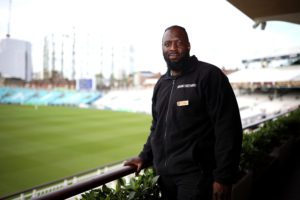 Once a pupil at Archbishop Tenison School, just across the road from the Kia Oval, Chris Thompson is now a member of Surrey’s general committee.
Once a pupil at Archbishop Tenison School, just across the road from the Kia Oval, Chris Thompson is now a member of Surrey’s general committee.
He had ambitions to play a part on the field, a young player of promise who was among the early intake of the county’s academy and shining in all departments playing for Guildford. Thompson was picked for the England U19s in 2006, the same season he scored a century for Surrey’s second team against Leicestershire at Uppingham School, which was augmented by three half-centuries in his 13 outings. He had hit a ton plus two half-centuries the previous year.
But it was for Leicestershire that Thompson made his sole first-class appearance, in the County Championship against Glamorgan at Colwyn Bay in August 2009, making 0 and 16 at the top of the order as the visitors were crushed by an innings and 72 runs.
Thompson enjoyed a second spell at Guildford, where his medium pace could be dangerous, and has also played for Dulwich, Old Whitgiftians and Chipstead, Coulsdon & Walcountians in the Surrey Championship. His talent as a musician has always been an important element in his life while his committee work sees him staying in tune with the club he watched as a boy.
Alex Tudor
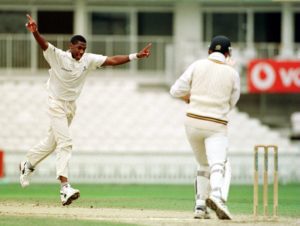 Tall and quick, Alex Tudor shook a mighty Australian batting line-up on his Test debut in Perth in 1998, his first three victims being the Waugh twins and Ricky Ponting.
Tall and quick, Alex Tudor shook a mighty Australian batting line-up on his Test debut in Perth in 1998, his first three victims being the Waugh twins and Ricky Ponting.
England were thrashed in three days but a new fast bowling star appeared to be ready to take international cricket by storm. As so often happens, living up to such a glorious start proved tough but Tudor is intensely proud of a career which included 10 Tests – including a match-winning unbeaten 99 against New Zealand at Edgbbaston in 1999– plus three one-day internationals and a part in winning three County Championship titles for Surrey inside four seasons.
“Unfortunately I was prone to injuries – I seemed to start most seasons okay and then struggle when we got to midway,” he reflects now. “But I look back very happily, particularly to having had some wonderful colleagues alongside me.”
Tudor’s older brother Ray had spent a year on the Surrey staff in 1991 but could not play a match through a serious back injury, while his father Darrell would be watching whenever he could, once he had finished security duties at The Oval. Darrell and his wife Jennifer have since returned to their native Barbados, having raised their boys from their home in Earlsfield and watched them flourish at the nearby Spencer Cricket Club.
Alex enjoyed a spell at Essex before returning to Surrey to play out his county career and is now heavily involved in coaching, working at Kimbolton School in Cambridgeshire, where he relishes encouraging pupils to play every sport they can. He can often be seen and heard on Sky Sports during the summer, commentating on Vitality Blast and Hundred matches, and relishes the opportunity to return to The Oval.
